
 |
|
October 2016 News from No BoundariesState of Practice: DOT Maintenance Management Systems | Wisconsin Joins No Boundaries Around the Maintenance World Meetings and Events | Training Opportunities | Research |
The No Boundaries Roadway Maintenance Practices pooled fund project, #TPF-5(330), facilitates the implementation of proven, ready-to-deploy maintenance innovations. |
|
Welcome! This newsletter from the national No Boundaries consortium features the latest updates on the group's activities and compiles recent research, state practices, and training opportunities related to non-winter roadway maintenance from around the country. |
News from No Boundaries |
|
No Boundaries recently surveyed state DOTs nationally to find out the latest practices, challenges and lessons learned in using maintenance management systems. The survey report summarizes responses from 33 states in the following topic areas:
| |
|
Wisconsin Joins No Boundaries The No Boundaries pooled fund recently welcomed the Wisconsin Department of Transportation as a new member. Scott Bush will serve as WisDOT’s representative to No Boundaries. He joins the following other member agency representatives: 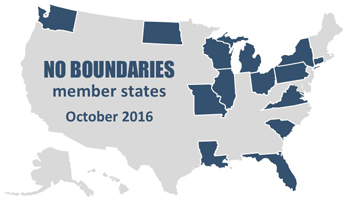
No Boundaries is Transportation Pooled Fund project #TPF-5(330). State DOT commitments to the project can be made using 100% federal funds. Contact Brian Hirt, CTC & Associates, at 402-770-9067 for more information. |
 |
Meetings and Events |
|
National Pavement Expo The National Pavement Expo 2017 will be held February 1-4 in Nashville. The conference includes tracks on crack sealing, paving, repair, seal coating, and sweeping, as well as networking events and industry roundtables, and an exhibit hall of paving and pavement maintenance tools, equipment, products and services. The conference will be preceded by an "emerging leader" boot camp January 31 to help attendees develop leadership skills. |
 |
Training Opportunities |
|
Sign and Pavement Marking Retroreflectivity Webinar TRB held and recorded a webinar on measuring sign and pavement marking retroreflectivity on October 19. The webinar covered three main points. First, it reviewed the basics of retroreflectivity measurement, including differences in measurements and how they are related to visibility and safety. Second, the webinar addressed sign retroreflectivity assessment methods, including minimum MUTCD standards and differences in various assessment methods. Third, there was also a discussion of advances in road markings to support autonomous vehicle technologies. | |
 Life Cycle Analysis in Transportation Asset Management Plans FHWA and AASHTO will hold a webinar on Life Cycle Analysis in Transportation Asset Management Plans, the 24th webinar in the FHWA/AASHTO Transportation Asset Management webinar series, at 2:00 pm Eastern Time on December 14. The webinar will discuss how agencies are considering life cycle analysis in their asset management plans, with particular attention on specific life cycle analysis activities, how development of asset management plans require increased focus on life cycle analysis, and the overall impact of life cycle analysis on the agency. |
Asset Management Research |
|
Dual Purpose Bridge Health Monitoring and Weigh-in-Motion (BWIM) This project proposed a dual-purpose bridge health monitoring and bridge weigh-in-motion system. Researchers developed a prototype of the system with sensors, data acquisition and data processing capabilities and installed it on an I-91 bridge in Meriden. Testing found that the system's average measurement of a truck of known weight was accurate within 8.0 percent. The long-term health monitoring system is based on a probabilistic framework, damage measures, and a mechanism to use WIM data to improve accuracy. Report. |
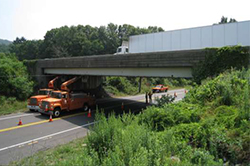 |
|
MnDOT Fracture Critical System Analysis for Steel Bridges This project developed a methodology to quantify when a steel bridge is considered fracture critical based on FHWA recommendations. The analysis uses advanced software to develop a 3D model of the bridge and simulate localized failures at steel pier caps to determine whether there is adequate redundancy in the load path to prevent a catastrophic failure of the entire bridge. The research suggests that retrofitting hammerhead pier caps with a load path redundant diaphragm may effectively provide load path redundancy to the bridge as a whole. Report. |
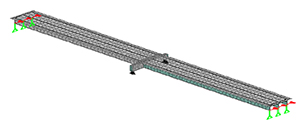 |
Bridge Repair and Rehabilitation Research |
|
Repair of Distortion-Induced Fatigue Damage in Bridge No. 135-87 (043SB and 044NB) Using Newly-Developed Strengthening Schemes A steel girder twin bridge structure near Park City has experienced distortion-induced fatigue cracking in its web-gap regions, primarily the bottom web-gap region. This project installed and evaluated a new retrofitting technique, the "angles-with-plate" retrofit, which is made of a pair of angles and a backing plate, applied at opposite sides of the girder web, to redistribute force concentrated in the web-gap region to a larger area of the girder web. Field tests and finite element analyses found that the technique is an effective and economical repair method. Report. |
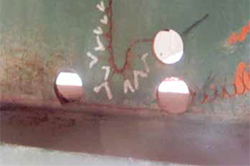 |
|
Implementation of the 2013 AASHTO Manual for Bridge Element Inspection The 2013 AASHTO Manual for Bridge Element Inspection made several improvements to the element inspection process implemented as part of the AASHTO CoRe Element Guide and AASHTOWare Pontis bridge management system. This project revised FDOT's existing computational methods to incorporate these new bridge element inspection processes. General improvements identified included more precise definition of defect types, separate assessment of some types of protective systems, and standardization of the number of condition states for each element. Report. |
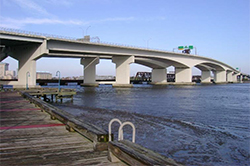 |
|
Use of Electrochemical Chloride Extraction and Associated Repairs to Extend the Beneficial Life of Reinforced Concrete Substructures The corrosion of reinforcement in concrete structures is one of the primary causes of bridge deterioration. Electrochemical Chloride Extraction (ECE) is a technique to mitigate corrosion by removing chlorides from concrete structures. This project reviewed the impacts of ECE on three bridges in Virginia, as well as a review of literature on the first treated bridge in Burlington, Ontario. It found that ECE can increase a bridge's service life, and that several practices, such as the use of waterproofing sealers to help protect substructure elements against chloride reintroduction and the repair or removal of overhead deck expansion joints that expose concrete to salty water, can improve its effectiveness. Report. |
 |
Environmental Stewardship Research |
|
Pavement Life Cycle Assessment Framework Life cycle assessment (LCA) is one technique used to understand the environmental impact of production, use, and retirement of products. The International Organization for Standardization has published a commonly accepted standard LCA method, but the specific practices vary greatly from one application to another, and there are no widely accepted standards that focus on LCA for pavements. This project developed a framework for performing LCA specific to pavement systems as a first step toward creating and implementing LCA principles in the pavement community. Report. |
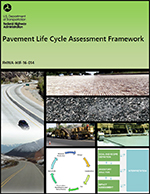 |
Pavement Repair and Rehabilitation Research |
|
In-situ Determination of Emulsion Application Rates for Tack Coats and Surface Treatments Chip seals use emulsions as a bonding agent for aggregates, but the proper application rate is critical to ensure good performance. Application rates of emulsions in the field can be highly variable. This project evaluated the Tack Lifter, a device to measure emulsion application rates in the field, as well as the "effective" application rate that takes the amount of emulsion absorbed into the paving surface into account. The research validated the Tack Lifter's performance, although it is not suitable for evaluating transverse variability in application rates. Report. |
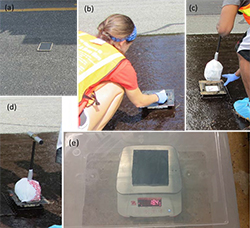 |
|
Optimizing Cold In-Place Recycling (CIR) Applications Through Fracture Energy Performance Testing Cold In-Place Recycling (CIR)—the pulverizing and rebinding of existing hot mix asphalt pavements with bituminous or chemical additives but no heating to create a restored pavement layer—has cost, environmental and performance advantages compared to standard practices. This project used a newly developed testing method, Fracture Index Value for Energy, to evaluate four different rebinding materials on CIR performance: Engineering Emulsion, High Float Emulsion (HFMS-2s), Commodity Emulsion (CSS-1) with cement, and Foamed Asphalt. It found that the test is viable to characterize CIR material behavior and has potential for use in CIR performance specification. Report. |
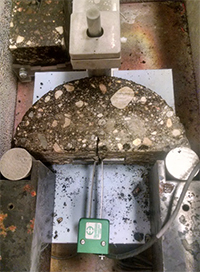 |
|
Equipment for Improving Pavement Crack Cleaning Operations Sealing of highway pavement cracks and longitudinal joints is one area Caltrans has identified as possibly needing enhancement. Cleaning cracks and joints is a necessary precursor to effectively sealing them. This investigation sought to identify conventional techniques and equipment that are effective at cleaning, drying, and removing incompressible materials from cracks and longitudinal joints. Cleaning methods can be categorized as non-contact, contact, or crack cutting. All of the technologies currently in use are low-tech, manual methods that require little training. Report. |
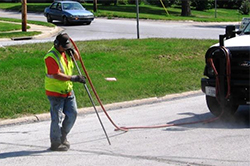 |
|
Best Practice Guide for the Selection of Pothole Repair Options Potholes are a major problem in many parts of the world. There are many techniques for pothole repair used throughout the world, in part because they occur on different types of road and are caused by different factors. This project sought to provide a consistent approach to selecting pothole repair materials and techniques. It created flowcharts that help users choose treatments based on conditions such as the frequency potholes occur, the location of potholes on the road, the road type and traffic level, and the road's expected remaining service life. Report. |
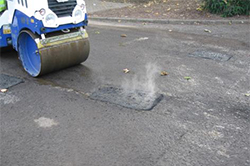 |
|
Developing Green, Highly Flowable, Rapid Set, High-Performance Concrete for Pavement Patch Repair This project developed a high-performance mortar for quick repair of concrete pavements. The mortar contains significant quantities of industrial by-products such as fly ash, silica fume and limestone fines. Tests of the mortar found that it is highly flowable and non-segregating and achieved compressive strength greater than 6,000 psi in one day, about 25 percent higher than rapid-set concrete. The mortar also has much lower chloride permeability than rapid-set concrete and excellent freeze-thaw durability. However, the mortar did exhibit higher autogenous shrinkage than the concrete, which may lead to cracking. Report. |
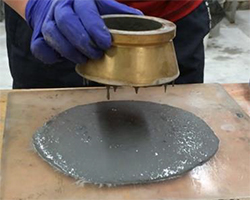 |
|
Pavement Performance Measures and Forecasting and the Effects of Maintenance and Rehabilitation Strategy on Treatment Effectiveness This TechBrief describes the methodologies and procedures used in analyzing the Long-Term Pavement Performance data to develop pavement performance measures and analyze treatment effectiveness. The project made several recommendations for measuring pavement, including using the sum of crack lengths to model pavement condition as a function of time, using dual pavement rating systems in assessing the benefits of pavement rehabilitation and maintenance treatments, and performing life cycle cost analyses to improve the overall cost effectiveness of pavement management. Additional recommendations cover deflection, use of state data, and future studies needed. Report. |
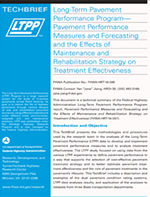 |
Subscribe to this newsletter |